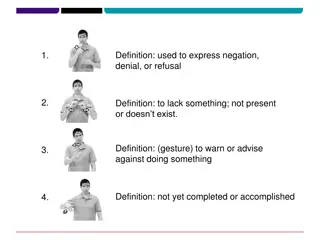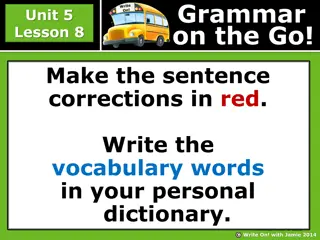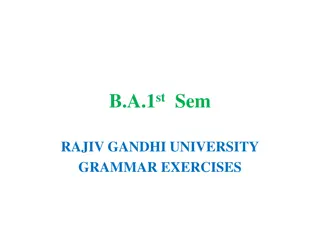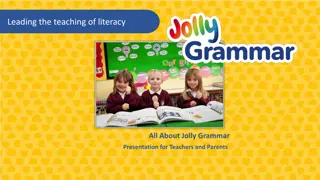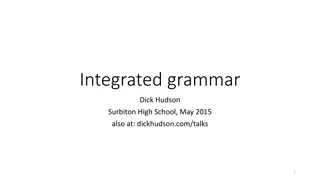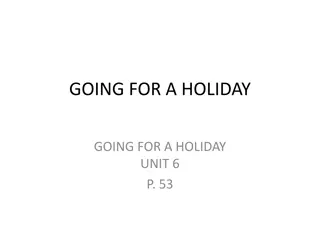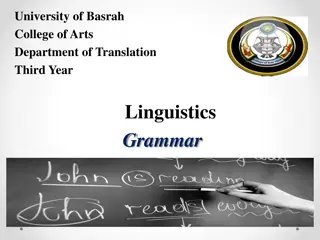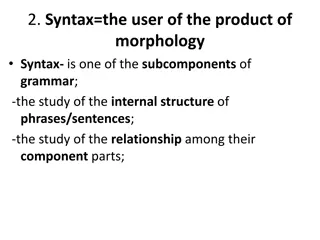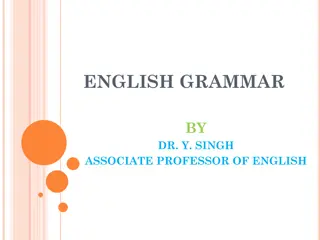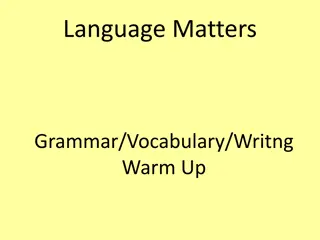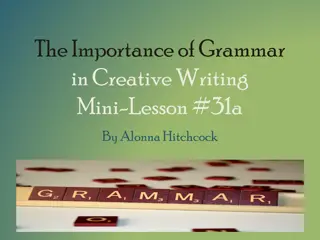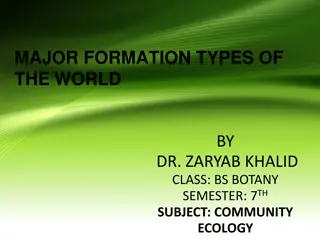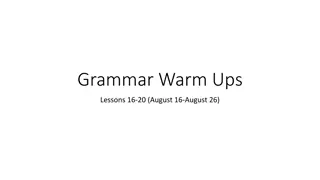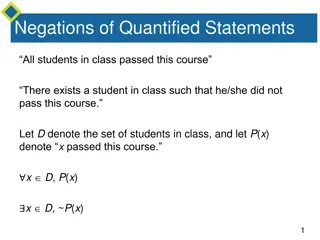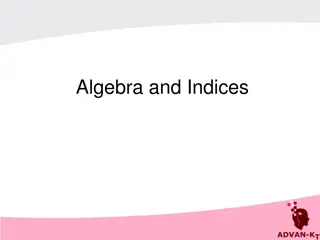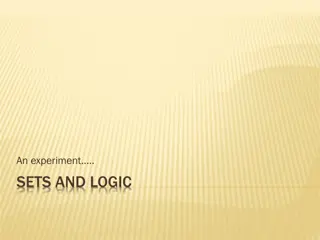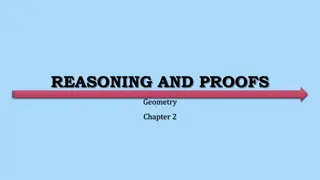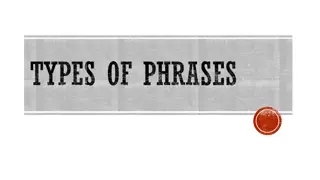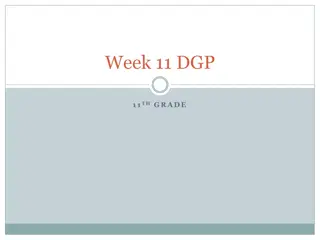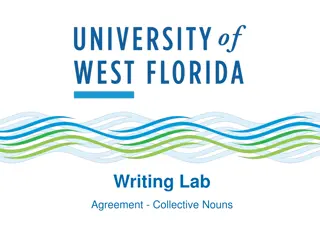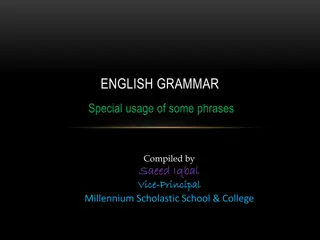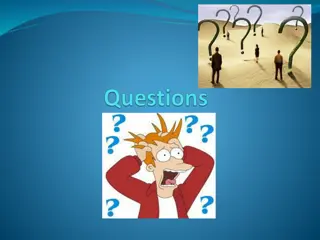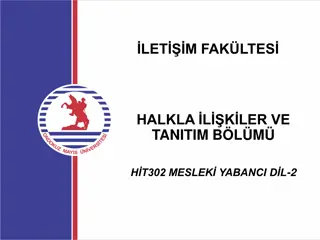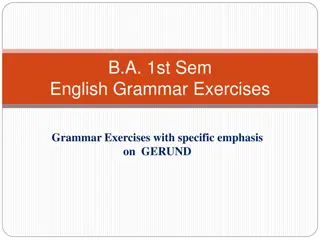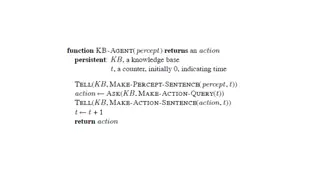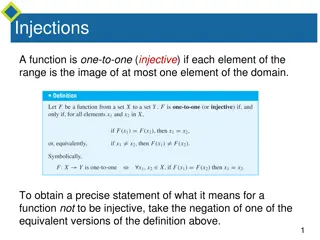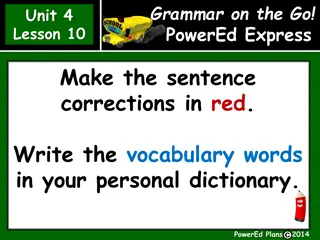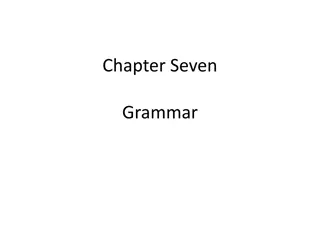Understanding Negation in Grammar: Definition, Formation, and Examples
Explore the concept of negation in grammar through definitions, forming negative sentences, and examples. Learn about using auxiliary verbs, prefixes, and suffixes to create negative statements. Examine negative verb forms in present simple and past tenses. Enhance your understanding with practical examples demonstrating negation in sentences.
Download Presentation

Please find below an Image/Link to download the presentation.
The content on the website is provided AS IS for your information and personal use only. It may not be sold, licensed, or shared on other websites without obtaining consent from the author. Download presentation by click this link. If you encounter any issues during the download, it is possible that the publisher has removed the file from their server.
E N D
Presentation Transcript
NEGATION NEGATION PART ONE PART ONE
Definition of Negation Definition of Negation Something considered the opposite of something Something considered the opposite of something regarded as positive. regarded as positive.
Forming negative sentences Forming negative sentences 01 01 03 03 02 02 04 04 Using a word negative in Using a word negative in form and meaning form and meaning Using auxiliary verb + not Using auxiliary verb + not Using a word negative in Using a word negative in meaning meaning Using prefixes and suffixes Using prefixes and suffixes
01 01 Using auxiliary verb + not Using auxiliary verb + not Positive Positive negative negative She She is a doctor. is a doctor. She She is not is not a doctor. a doctor.
Negative Verbs To Be Present simple Negative Verbs To Be Present simple
Negative Verbs To Be Negative Verbs To Be Past Past simple simple
Negative Verbs To Negative Verbs To do do Present simple Present simple
Negative Verbs To Negative Verbs To do Past do Past simple simple
Examples Examples I I am am interested in interested in reading. reading. I I am not am not interested in interested in reading. reading. She She does does the homework. homework. She She does not does not do homework. homework. the They They have to the party. to the party. The have not have not come to the party. party. have come come do the the The come to the I I could could read without read without my eyeglasses. my eyeglasses. I I could not could not read without my read without my eyeglasses. eyeglasses. They They went yesterday. yesterday. They They did not did not go yesterday. yesterday. went to school to school I I had had read read the the book. book. go to school to school I I had not had not read the book. read the book.
q/Fill in a positive or a negative form of the q/Fill in a positive or a negative form of the verb verb to be to be to make the sentences true to make the sentences true 1 1- - The Pyramids The Pyramids ---- ----are are---- ---- in Egypt. 2 2- - Brad Pitt Brad Pitt ---- ----isn isn t t----- ----- a doctor. a doctor. 3 3- - I I - - m not m not--- ---an an animal. animal. 4 4- - Snow Snow --- ---is is--- --- white. white. 5 5- - Lions Lions ---- ----are are----- ----- dangerous. dangerous. 6 6- - The Chinese language The Chinese language --- ---isn isn t t---- 7 7- - London London ---- ----is is---- ---- the capital of Great Britain. the capital of Great Britain. 8 8- - It It --- ---isn isn t t----- ----- Saturday today. Saturday today. in Egypt. ---- easy. easy.
DONT DIDN T HAVEN T AREN T ISN T WON T M NOT DOESN T HADN T HASN T


